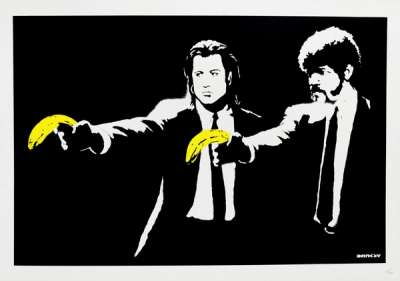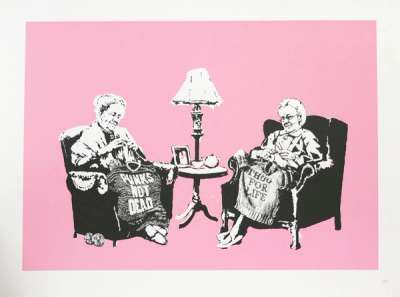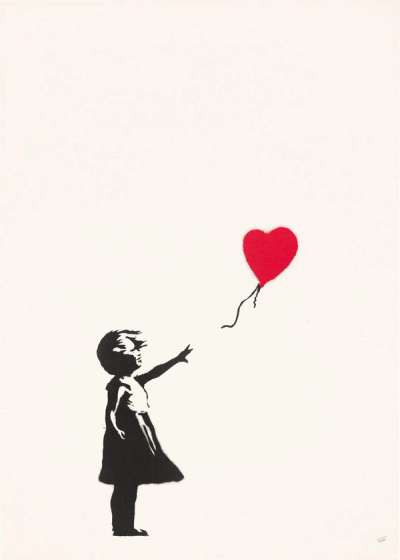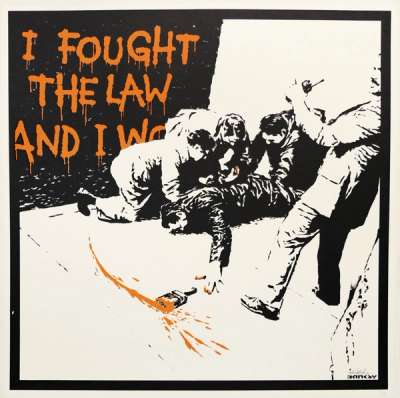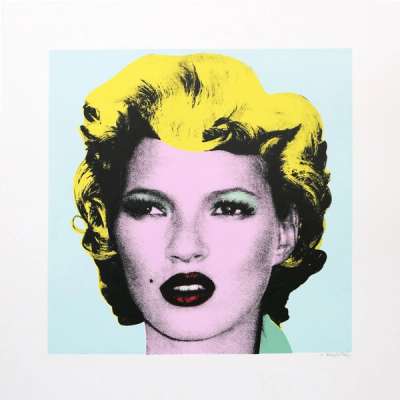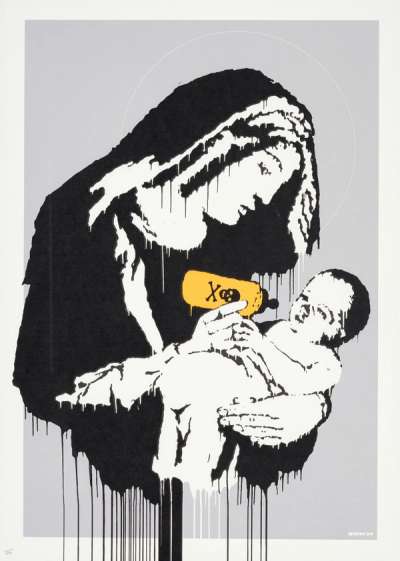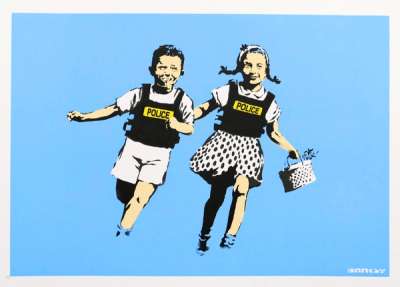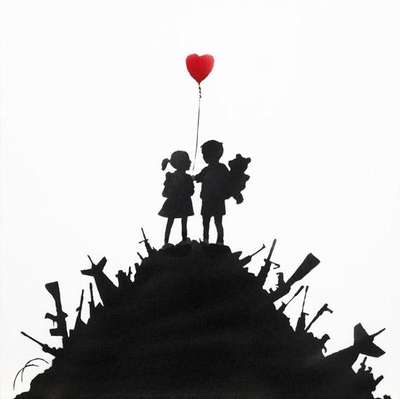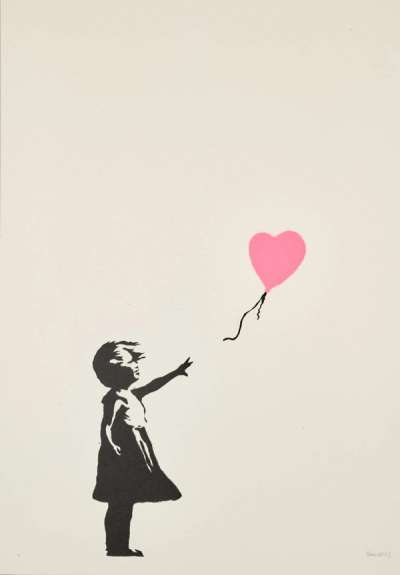Banksy's Gas Mask Boy

 Gas Mask Boy © Banksy 2009
Gas Mask Boy © Banksy 2009
Banksy
269 works
In Banksy’s Gas Mask Boy, a stark greyscale world meets a vivid vision of innocence and hope. Crafted with spray paint and oil on wood in 2009, the artwork presents a child enshrouded in an industrial mask, yet through it, he envisions a bright, unblemished landscape. Here, Banksy juxtaposes the bleakness of urban reality with the purity of the natural world, captured in the child's colourful reflection – a poignant commentary on hope amidst desolation.
Gas Mask Boy: Meaning & Analysis
Banksy's Gas Mask Boy presents a narrative that combines the grim realities of urban living with a child's innocent perspective. The image of the boy, covered with a gas mask, invokes a powerful dichotomy – he is vulnerable and shielded, with his gaze directed towards a future that oscillates between bleakness and beauty. The vibrancy of the scene within the mask's visor stands in sharp contrast to the surrounding harshness, suggesting a yearning for escape or a reminder of what lies beyond the concrete confines.
The cans scattered at the boy's feet, tools of Banksy’s artistic expression, symbolise the seeds of creativity sprouting from the grey of the mundane. With the flower and peace sign, rendered in the same greyscale as their urban backdrop, Banksy could be commenting on the desensitisation to symbols of peace and nature within the metropolitan context. Yet, the child's action of painting them represents an instinctive drive to beautify, to assert life where it has been stifled, and to articulate a message of harmony among chaos.
Banksy's choice to render the boy in greyscale against the technicolor reflection speaks to the artist's larger commentary on societal conditions – the loss of innocence, the pervasive reach of industrialisation, and the transformative power of art. The gas mask, a symbol traditionally associated with warfare and toxicity, is recontextualised as a lens through which the boy views an untarnished world, a striking metaphor for the resilience of hope and the power of imagination to transcend adversity.
Through Gas Mask Boy, Banksy may be offering a self-reflective portrayal, not just of his own concealed identity, but of the artist's role as a societal observer and commentator. The child's posture and engagement with his surroundings reveal a sense of determined focus, a reflection of Banksy's own meticulous approach to art as a means of social examination and critique.
“Gas Mask Boy is a poignant representation of the stark realities of urban existence juxtaposed with the enduring innocence of childhood.”

Reflections on Gas Mask Boy
Gas Mask Boy, marked by its striking dichotomy, offers a lens through which to view the world – one that recognises the bleak realities of our times while holding onto a vision of nature’s serenity and peace.
The boy in the gas mask becomes an icon of resilience, his youthful idealism unmarred by the harsh environment that surrounds him. This contrast is a reminder that, despite the overbearing presence of adversity, the human spirit possesses a capacity to envision and aspire towards a brighter existence.
